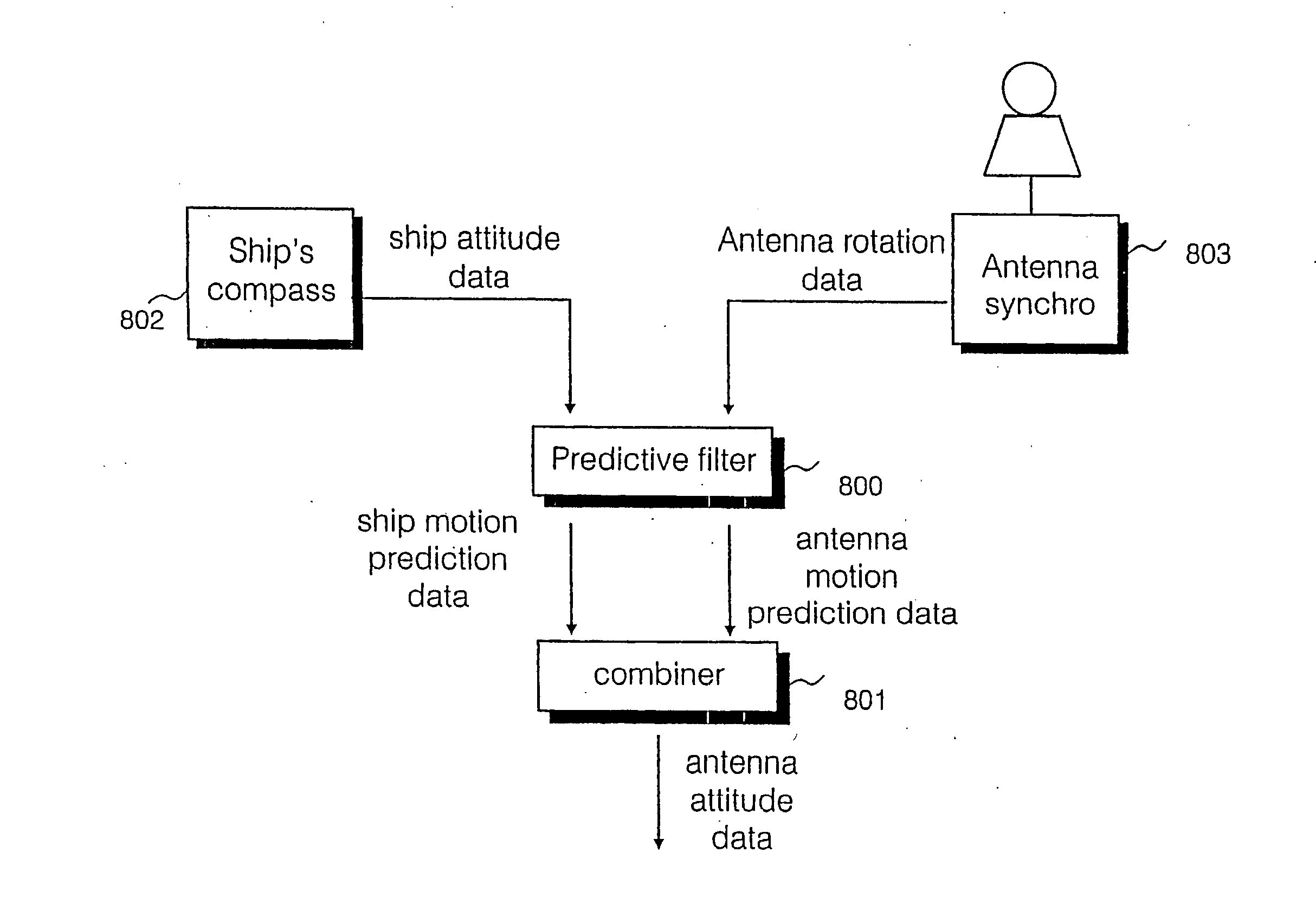Ship motion predictor
a technology of motion prediction and ship, applied in the direction of positioning/direction control, navigational aid arrangement, reradiation, etc., can solve the problems of not being able to mechanically stabilize the radar, the particular problem of predicting the look direction of the antenna is not well addressed
- Summary
- Abstract
- Description
- Claims
- Application Information
AI Technical Summary
Benefits of technology
Problems solved by technology
Method used
Image
Examples
Embodiment Construction
[0102] There will now be described by way of example the best mode contemplated by the inventor for carrying out the invention. In the following description numerous specific details are set forth in order to provide a thorough understanding of the present invention. It will be apparent however, to one skilled in the art, that the present invention may be practiced without limitation to these specific details. In other instances, well known methods and structures have not been described in detail so as not to unnecessarily obscure the present invention.
[0103] Whilst in the following description, a best mode implementation is described with respect to a ship's radar, the methods and apparatus disclosed are not restricted to a ship's radar but may be applied to any rotating antenna of any type of vehicle and the scope of the invention is limited only by the wording of the claims herein.
[0104] In this specification, the term “pitch” is used to mean rotation of a ship about a transver...
PUM
 Login to View More
Login to View More Abstract
Description
Claims
Application Information
 Login to View More
Login to View More - R&D
- Intellectual Property
- Life Sciences
- Materials
- Tech Scout
- Unparalleled Data Quality
- Higher Quality Content
- 60% Fewer Hallucinations
Browse by: Latest US Patents, China's latest patents, Technical Efficacy Thesaurus, Application Domain, Technology Topic, Popular Technical Reports.
© 2025 PatSnap. All rights reserved.Legal|Privacy policy|Modern Slavery Act Transparency Statement|Sitemap|About US| Contact US: help@patsnap.com



